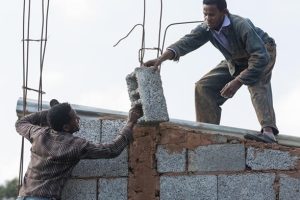
Starting from the fall of Ethiopian Christmas Holiday, along the month of January till mid-February, it is common to see people getting busy of wedding celebrations and traditional dogmas in most parts of northern Ethiopia, Tigray and Amhara states.
They usually celebrate most of the feasts before the grand fasting, for the majority of Christian followers, begin. Wedding in Tigray is not a single day ceremony. It may last up to three days. Then, a honeymoon that may last for a month follows depending on the spare time of the brides and the readiness of the bride’s relatives to the wedding celebration.
While experts in the area are always in argumentative debates concerning the economic aspects of such extravagant cultural practices and holidays, the social values of the society are attracting so many tourists in most parts of Tigray state. This writer has attended several dogmatic festivals in Hawzen, a small and very confined town known for its tourism destination in the state following the ancient town of Aksum.
In most of the remote villages of Tigray, the wedding lasts a bit longer than urban areas. Honeymoon used to last for a month and two weeks plus until it has recently been made to last short due to its economic side effects. Now, it is mostly concluded in less than two weeks and three days both in rural and urban communities.
How the wedding goes In the eve, some four or three days before the wedding day, all the best men and women gather in the home of relatives of the bride/groom to exchange ideas on how to act during and after the wedding celebration. All best-men and women are supposed to prepare the same color suits or uniforms and some cultural jewelry for the wedding day.
On the morrow, the best-men dressed their decorated uniforms and jewels and began to create hustle and bustle, jumping here and there in order to let the close by communities see the wedding is already started. Evening time, during the main wedding day, is the time for the groom and his best men to get ready to go and bring the bride and her friends using traditional transportation or vehicle depending on the topography. The same goes for Muslim communities in Tigray.
Like Christians, Muslim wedding is a three days celebration. The main wedding day, brides wear a regular white wedding gown. On the second day, they wear some traditional clothes. The final day is called the Hamawti day literally meaning (the day of in-laws). It falls a week after the main wedding day and the brides will have an introduction with all the women relatives gathered for the celebrations. Most common in the remote areas, the wedding also involves dowry, animals usually given by the bride’s relatives in order to ease the creation of new family by the brides after the end of wedding celebrations.
Dowry is given in the form of cash in urbanized communities resided in towns and semi-urban areas. It is called Gezmi in Tigrinya and Tilosh in Amharic. It is becoming a means of generating a chunk amount of income by the families of the bride. The wedding party which was attended by this writer was finally adorned by a total dowry of 60,000 bank cheque, which was uncommon some ten years back. This shows that the wedding is practiced as a means of promoting saving as well. Blessings inside churches In very rare happenings, Christian groom may have Muslim best-men and the reciprocity also works the same. Then, the Muslim stay out when the groom, his friends, and the bride took into the church programs. The bridegroom, the brides and their best-men wake up early in the morning for the mass and blessings accompanied by religious songs to and from the church.
Priests give religious instructions inside the church. The priest in charge of undertaking the church program reads some biblical commandments to do and not to do by the brides. Brides finally commit their self entering in to covenant. They put the ring of the covenant to their finger in front of the congregation. This marked oneness and the priest blesses the union before brides leave the church. On the third wedding day, relatives leave space for the brides. In the midnight, friends from the groom side come out of the home and are sent with drums to the bride’s relatives to herald their oneness.
The Ethiopian Herald March 7, 2019
BY HAFTU GEBREZGABIHER





